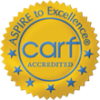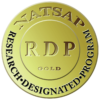
Nonetheless, the need for the therapeutic adventure based programs in North Carolina that can assist young adults’ recovery from the abuse of such drugs has not waned. Indeed, CNN draws attention to the tragic example of the high school soccer player and honor roll student in suburban Atlanta, Chase Burnett, who was found dead in his family’s hot tub on March 4, 2012 – in close proximity to a package of synthetic marijuana.
Only on the day of the 16-year old’s passing did his father, David Burnett, learn from Chase’s friends that his son had tried synthetic marijuana. He told CNN: “What killed Chase was the synthetic cannabinoid poisoning, the marijuana. The chemicals that were sprayed onto the leaves shut his lungs down. He suffered a violent death. He asphyxiated and suffocated, and he obviously became unconscious … and I found him in the hot tub.”
A report by the Substance Abuse and Mental Health Services Administration (SAMHSA) revealed that over 28,000 emergency room visits in 2011 could be attributed to synthetic drugs. Also known as “designer” drugs, synthetic drugs are substances that have been chemically laced to mimic the highs of popular controlled drugs like cocaine and marijuana. However, whereas the two aforementioned regular drugs are derived from plants, synthetic marijuana consists of chemicals and dried plant materials. It has been known to be marketed as “potpourri.”
Bath salts are another popular synthetic drug, and while they may resemble true bath salts like Epsom salts, they differ greatly chemically. The side effects produced by these bath salts – whether they are taken orally, inhaled or injected – are much like those of amphetamines. Noted physical effects of bath salts range from anger and violence to profuse sweating, heart palpitations and hallucinations, while the symptoms produced by synthetic marijuana are no less troubling, the most extreme including the loss of motor skills, physical control and seizures.
Such dangers only make it all the more essential for parents and guardians to talk to their children about synthetic drugs, particularly given their ready availability in retail. Such pre-emptive, educational intervention can help to prevent the need for therapeutic adventure based programs in North Carolina, as arises from even the most casual use of such immeasurably harmful substances.









